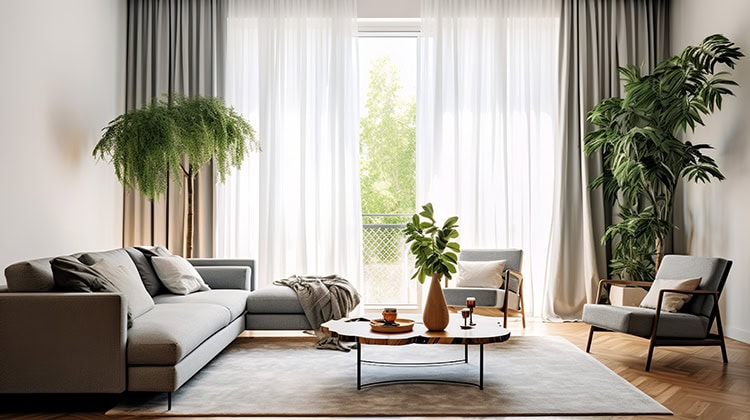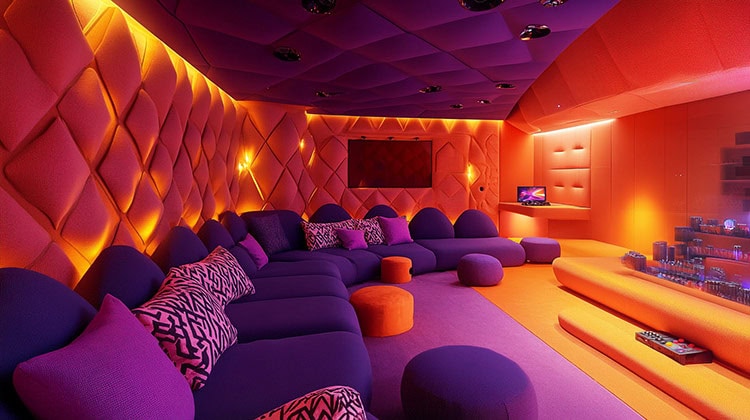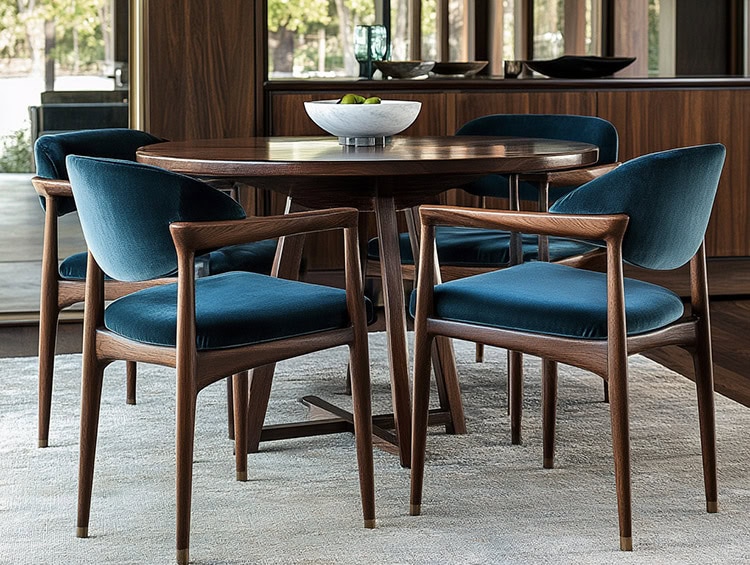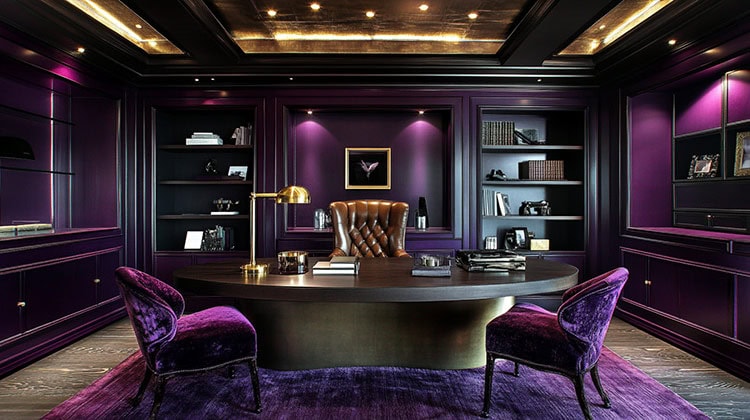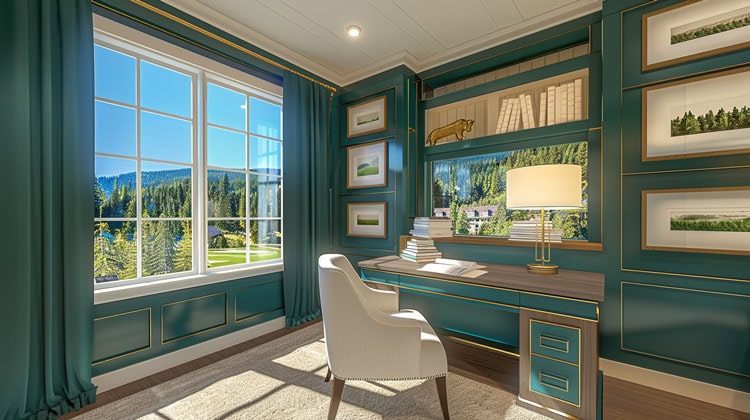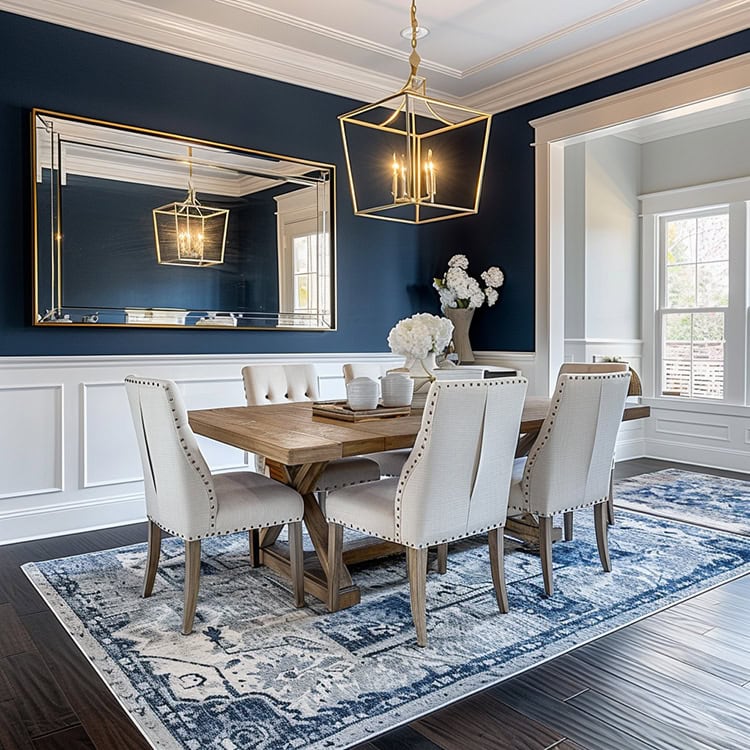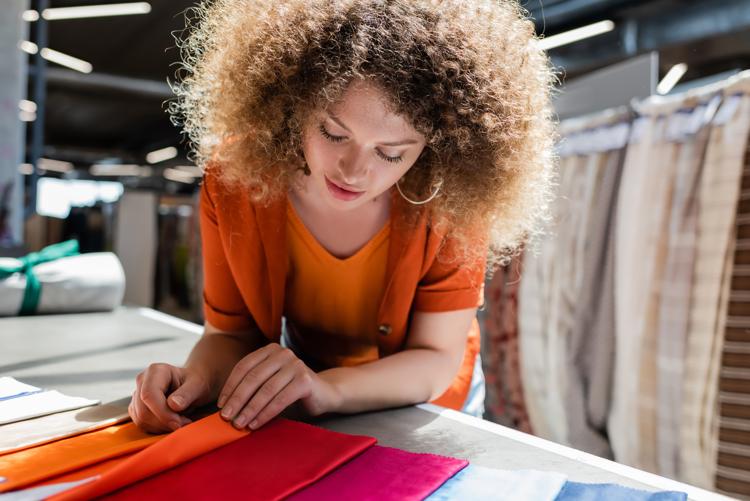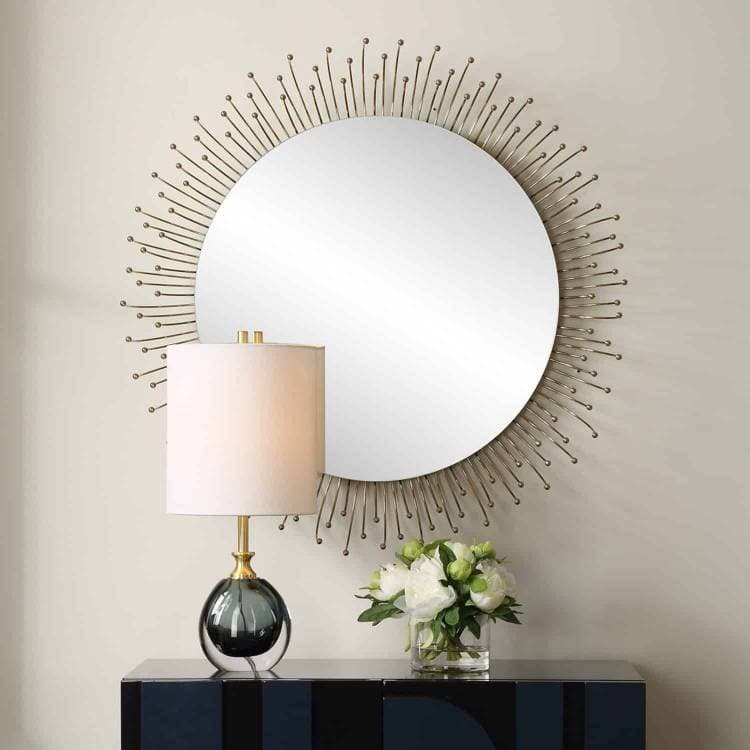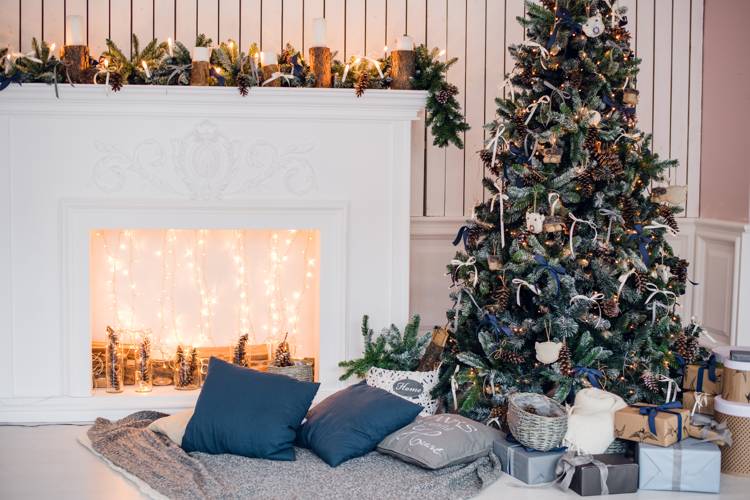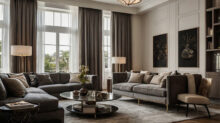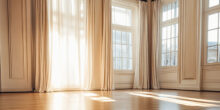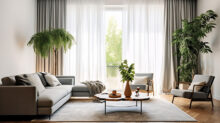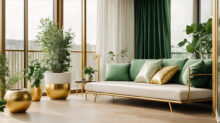Fiber Personalities
Kick off your next decor project with confidence by understanding each fabric’s character—from the airy slubs of linen to the lush depth of velvet and the hard-wearing ease of performance synthetics. Then dive into weave types, pattern scale considerations, and a simple four-step checklist to ensure your choice looks gorgeous and functions flawlessly.
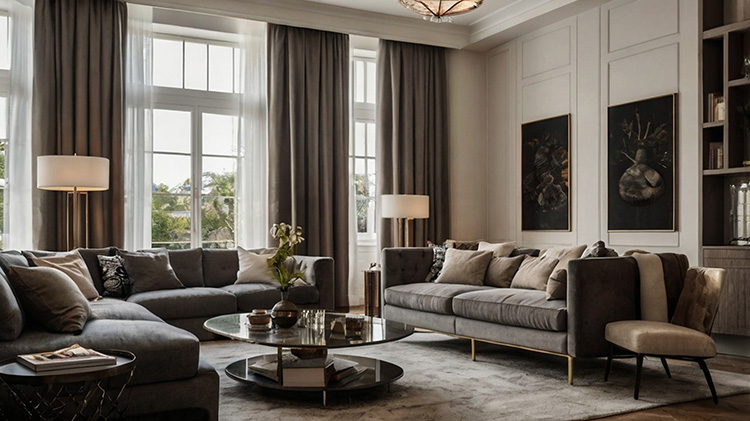
-
Linen
-
Look & Feel: Naturally slubby and textured, linen brings an organic, lived-in beauty—even when new. Its matte finish and gentle irregularities suit Belgian-style simplicity or airy coastal interiors.
-
Performance & Care: Highly breathable and strong, linen softens with washing but wrinkles easily (a hallmark, not a flaw). To minimize creasing, line-dry flat or tumble briefly on low heat, and press lightly while still damp if you prefer a neater look.
-
Best Uses: Slipcovers, draperies and relaxed upholstery (think club chairs or banquet seating) where a casual elegance is desired. Pair with crisp whites and weathered woods to emphasize its textural charm.
Cotton & Cotton-Blends
-
Look & Feel: Smooth, tightly woven cotton has a clean, versatile hand that accepts dyes evenly—ideal for everything from bold prints to soft pastels. Blends (with polyester or rayon) add wrinkle resistance and dimensional stability.
-
Performance & Care: Machine-washable and resilient, pure cotton can shrink if not pre-shrunk; blends will hold shape better. Tumble or line-dry, and avoid high-heat ironing on blends to preserve finish.
-
Best Uses: Slipcovers, throw pillows, casual dining chairs, and window treatments in family rooms or kitchens—anywhere you want easy-care without sacrificing style.
Silk
-
Look & Feel: Silk’s natural sheen and fluid drape create depth and movement—luxurious in formal living rooms, master suites, or statement draperies. Available in plain weaves (shu), heavier satins, and textured dupioni.
-
Performance & Care: Delicate: protect from direct sunlight and abrasion. Always line or interline (with cotton or non-woven backing) to guard against sun-rot, and dry-clean only. Spot-treat carefully with pH-neutral cleaners.
-
Best Uses: Tailored drapery panels, accent pillows, bed canopies, and upholstered headboards—places where silk can shine without heavy wear.
Velvet
-
Look & Feel: Velvet’s dense pile plays with light, delivering a jewel-like depth of color and a sumptuous hand. Cotton velvets feel rich; performance velvets (polyester/nylon blends) offer durability and soil resistance.
-
Performance & Care: Pile fabrics can crush or mark—vacuum gently and rotate cushions to maintain a consistent look. Blot spills immediately; many performance velvets can be cleaned with mild soap and water.
-
Best Uses: Statement sofas, dining chairs, accent ottomans, and headboards. In high-traffic or kid-friendly spaces, opt for performance velvet in darker hues to hide wear and stains.
Performance Synthetics (Poly/Olefin Blends)
-
Look & Feel: Engineered for life, these fibers emulate natural textures (linen-look, raffia, basketweave) while adding functionality. Colors stay true—even under intense sun.
-
Performance & Care: Outstanding resistance to UV-fading, stains, mold, and mildew. Most are bleach-cleanable (check manufacturer’s specs) and can be power-washed off-frame for outdoor or sunroom upholstery.
-
Best Uses: Sun-bleached bay windows, poolside lounges, patio furniture (indoors or out), and any household with pets or active kids. Combine with crisp outdoor-style pillows and woven rugs for a seamless indoor-outdoor vibe.
Style Tips & Pairings
-
For layered dimension, mix linen slipcovers with velvet accent pillows—textural contrast feels curated yet casual.
-
In a bold scheme, use performance synthetics for large upholstery pieces, then layer silk or velvet in small doses (pillows, drapery borders) to introduce luster.
-
Monochrome palettes: a linen-blend sofa, cotton-blend drapes, and velvet cushions in varying shades of the same hue create depth without overwhelming pattern.
-
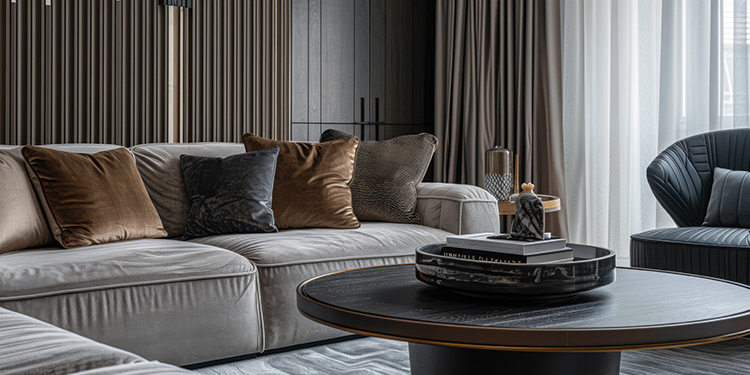
Plain Weave & Twill
-
Look & Feel
-
Plain Weave: The simplest over-under structure creates a tight, uniform surface with a faint “checkerboard” texture when viewed up close. It reads crisp and tailored—think classic shirting or ticking stripes.
-
Twill: Characterized by its diagonal “rib,” twill offers subtle sheen and drape, plus slightly more body than plain weave. Think denim, chino, or herringbone patterns with that soft, slanted line.
-
-
Performance & Care
-
Both weaves are inherently stable and resist distortion, making pattern-matching straightforward and seams less prone to “walking.”
-
Machine- or dry-cleanable, depending on fiber content. Plain weave in linens and cottons may wrinkle, while twills in blends hold their shape better.
-
-
Best Uses
-
Upholstery on structured pieces (sofas, dining chairs) where crisp lines are key.
-
Window treatments and pillows when you want easy alignment of stripes, plaids, or geometric prints.
-
-
Style Tips
-
Use plain-weave linens for a minimalist, Scandi-inspired look.
-
Introduce a herringbone or chevron twill in wool blends for cozy yet polished accent chairs or ottomans.
-
Damask & Jacquard
-
Look & Feel
-
Damask: Traditionally made from silk or linen, damask uses a single color in contrasting weave directions to form reversible, tone-on-tone patterns—floral, medallion, or foliage motifs that come to life in light and shadow.
-
Jacquard: A broader category woven on a Jacquard loom, enabling multi-color, intricate designs and raised textures—paisley, damask, brocade, and more. The pattern is integral to the fabric, not merely surface-applied.
-
-
Performance & Care
-
Heavier weight and firm hand make these fabrics durable for occasional use. Many are dry-clean only; some blends may be spot-cleanable.
-
Pattern alignment at seams takes care but rewards with a seamless, high-end finish.
-
-
Best Uses
-
Formal dining chairs, parlors, and library spaces where the weaving technique itself adds heirloom quality.
-
Draperies and valances—especially in two-color jacquards that interplay with natural light.
-
-
Style Tips
-
Pair a dramatic damask upholstered headboard with crisp, plain-weave sheers for balance.
-
Use a tonal jacquard in a mid-century lounge to merge vintage patterns with modern silhouettes.
-
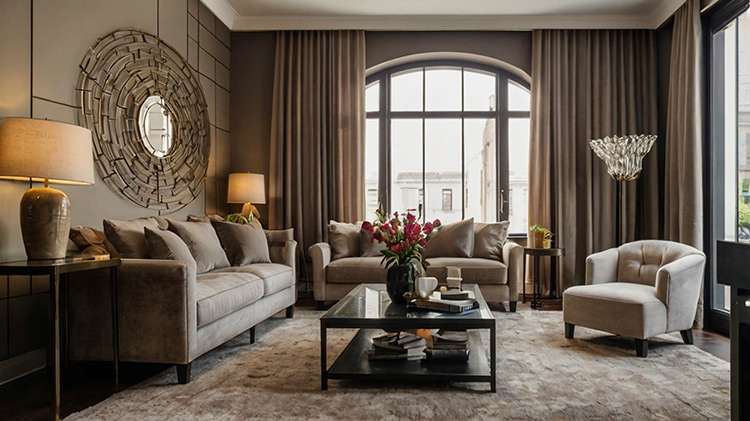
Matelassé & Bouclé
-
Look & Feel
-
Matelassé: Originally a quilted look achieved by weaving two warps and one weft, creating a softly “puffed” surface reminiscent of hand-stitched coverlets. The effect is three-dimensional without the weight of real quilting.
-
Bouclé: Yarn-dyed loops and curls give bouclé its characteristic “nubbly” texture—think teddy bear fabric. The surface can range from subtle pebble to pronounced popcorn clusters.
-
-
Performance & Care
-
Matelassé is generally stable with low stretch; many blends are machine-washable on gentle cycles.
-
Bouclé can snag or fleece out over time; choose blends with synthetics for durability, and vacuum or brush lightly to remove dust. Professional cleaning is often recommended.
-
-
Best Uses
-
Matelassé for bedspreads, casual slipcovers, and upholstery on low-profile sofas where you want a bit of softness and depth.
-
Bouclé for sculptural chairs, statement ottomans, and throw pillows that invite touch.
-
-
Style Tips
-
Layer a matelassé coverlet over plain linen sheets and add velvet or silk pillows for textural interplay.
-
In a modern minimalist living room, a boucle accent chair in a neutral tone becomes an artful focal point without overwhelming the palette.
-
Pattern Scale & Orientation
Bold prints and oversized florals become the room’s focal point. Ask for at least one full repeat (or a strike-off) to judge scale on your actual wall. If the pattern is railroaded—turned sideways on the bolt—verify that it will hang the way you intend. For wide windows, consider double-width (118-inch) sheers to avoid vertical seams.
Practical Checklist
Before committing to a fabric, run it through a simple, four-step practical checklist—evaluating light and privacy, drape and fullness, cleaning requirements, and hardware compatibility—to ensure it performs beautifully in your space.
-
Purpose test: Hold the fabric against the window at different times of day—does it deliver the privacy and glow you want?
-
Drape test: Pinch 6–8 inches of cloth and let it fall. Does it create the depth of fold you envision?
-
Care test: Confirm cleanability. Some luxe fibers need professional care; performance blends may be spot-cleanable at home.
-
Hardware test: Weigh a yard of the fabric. Multiply by planned panel width to be sure your rod and brackets can handle the load.
By weighing performance, aesthetics, and maintenance up front, you’ll choose a base cloth that not only looks stunning but also lives beautifully for years.

